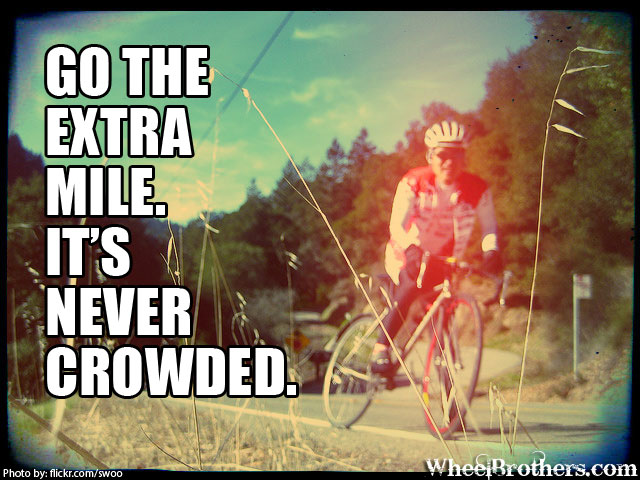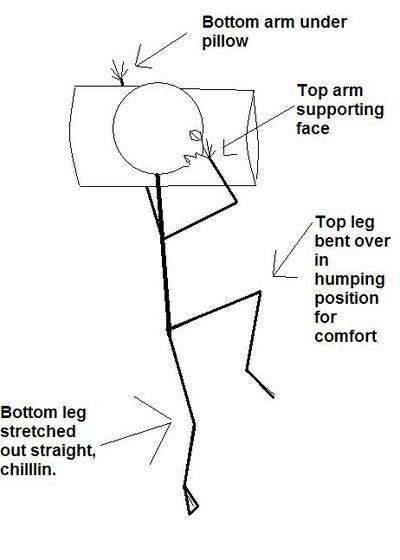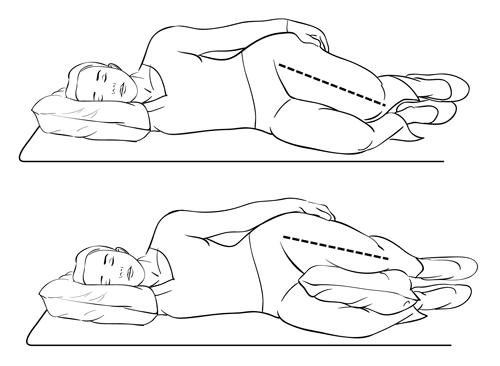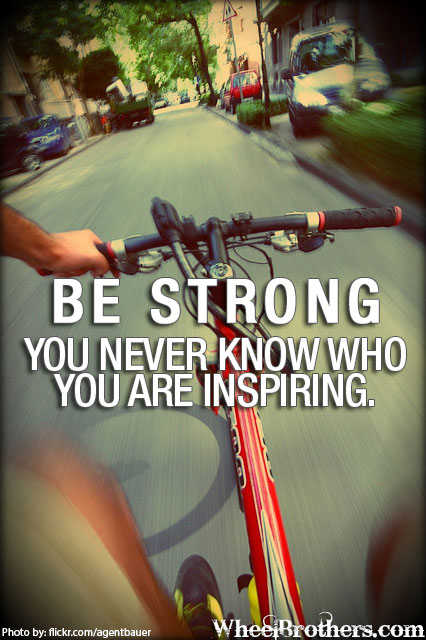
Go the extra mile…

One small positive thought…

When you feel like quitting…

Life is a Beautiful ride

It’s a beautiful day…

What is your recovery position?
Here at Wheelbrothers.com, we aim to bring you the best Texas has to offer in the sport of cycling. Today we have a real treat for you – one of the best bike fitters in the United States is stepping in to bring you some helpful information about sleeping positions and how it impacts your cycling performance. His name is Tad Hughes and he just happens to run the ONLY dedicated bike fitting studio in the State.
Located in Houston, Texas, Tad Hughes Custom is kind enough to share some of his knowledge with us and will be contributing different articles throughout the year.
Take it away, Tad…
The position you sleep in may be sabotaging your cycling performance.
As athletes we try to control what we can in pursuit of our goals, equipment, diet, training, work, friends and family. If you ride a bike, there is a universal need for recovery regardless of cycling discipline or fitness level. Any good coach will attest that quality sleep is key in not only maintaining fitness but also foundational to building your fitness “engine”. More importantly, what position is your engine (the human body) sleeping in?
 It is estimated you will spend a third of your life in bed. An unsupported skeletal position leads to muscle imbalances, functional leg length discrepancies and unilateral pelvic imbalances. Apply these issues to a closed kinetic chain such as cycling and you have a root cause or “trigger” for hip, knee and lower back pains that never seem to subside. With the majority of society being right handed it is uncanny how many non-southpaws seem to sleep on their left side and/or stomach with their left leg prone (bike fitter’s word for straight) and their right leg pulled up at a 90 degree angle like a flamingo; what professionals like to call a modified free-fall position.
It is estimated you will spend a third of your life in bed. An unsupported skeletal position leads to muscle imbalances, functional leg length discrepancies and unilateral pelvic imbalances. Apply these issues to a closed kinetic chain such as cycling and you have a root cause or “trigger” for hip, knee and lower back pains that never seem to subside. With the majority of society being right handed it is uncanny how many non-southpaws seem to sleep on their left side and/or stomach with their left leg prone (bike fitter’s word for straight) and their right leg pulled up at a 90 degree angle like a flamingo; what professionals like to call a modified free-fall position.
Why is this significant? Over time, the uneven muscular tension of your back manipulates your skeletal alignment. In this modified free-fall position the left side of the body is prone, but the right side from shoulder to hip is shorter, thus drawing the hip up. Our young bodies tend to snap-back within the first few minutes on the bike, but as we age this process takes longer, or may not happen at all depending on the rigidity of our personal muscular structure. So in essence you are not resting your muscles “evenly”.
What is the solution? Can you simply start sleeping on your back or switch to the other side? Probably not. Habits are hard to break, especially subconscious ones. When I ask clients how they sleep many do not know, probably because they are not conscious of it. For those who commit to change by trying to sleep on their back, they often report less restful sleep or switch to their old position some time during the night. Your best recourse (at minimum) is to sleep with a body pillow between your knees or under the elevated leg. While I am not anti-romantic, the goal is to keep spinal alignment with the pelvis and more importantly reduce the pelvic rotation. There are specialty pillows on the market ranging from small to full body (preferred) which will aid in your personal alignment without greatly changing what you already know. And while not a scientific product, I often recommend investing in an inversion table to assist in physical maintenance and restoring balance (albeit temporary) and muscular tension.  I find that in reoccurring sessions with long distance clients (IRONMAN, RAAM) sleep correction coupled with inversion yielded less “deflection” in their position under duress or the limits of exertion with more even muscle recovery. The reduction of muscular tension yields a more neutral position with more manageable pelvic angles versus a position that was uncorrected or catered to a pelvis off axis.
I find that in reoccurring sessions with long distance clients (IRONMAN, RAAM) sleep correction coupled with inversion yielded less “deflection” in their position under duress or the limits of exertion with more even muscle recovery. The reduction of muscular tension yields a more neutral position with more manageable pelvic angles versus a position that was uncorrected or catered to a pelvis off axis.
Remember, a body compensating for structural deflection in a closed kinetic loop is forced to provide added rigidity even prior to motion. A body foundationally sound at rest will be foundationally functional and adaptive in motion.
Follow them on
Facebook: http://www.facebook.com/
Twitter: http://www.twitter.com/
If you dont like the rules…

Take pride in how far you have come…

Be Strong…

